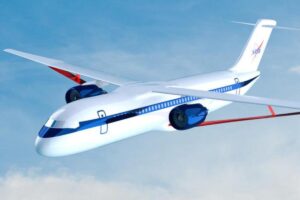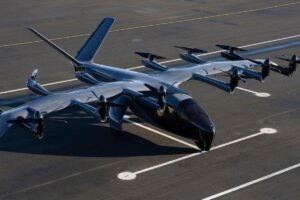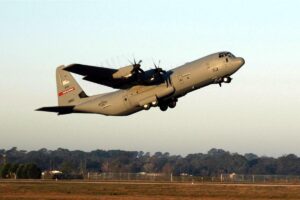Ethernet to 1553 Converters for Modern Avionics
- Executive Summary
- Introduction
- Overview of MIL-STD-1553
- Ethernet in Avionics
- The Need for Ethernet to 1553 Conversion
- Core Functions of Ethernet to 1553 Converters
- Design Considerations
- Technical Challenges
- Use Cases and Applications
- Integration with Legacy and Modern Systems
- Case Studies
- Testing and Validation
- Compliance and Certification
- Future Trends
- Conclusion
In modern avionics, the convergence of Ethernet and MIL-STD-1553 data networks presents a unique challenge. With Ethernet’s high-speed capabilities and MIL-STD-1553’s deterministic and rugged protocol still prevalent in legacy systems, interoperability is crucial. Ethernet to 1553 converters offer an essential solution for bridging these technologies, facilitating reliable and efficient communication between legacy avionics buses and new-generation systems. This white paper explores the role, architecture, and application of these converters in aerospace environments.
Avionics platforms have evolved significantly, driven by increasing demands for data bandwidth, integration, and interoperability. While Ethernet has become the backbone of modern avionics networks, MIL-STD-1553 remains an entrenched standard due to its proven reliability and deterministic communication. Integrating these two protocols requires careful engineering, and Ethernet to 1553 converters play a vital role in ensuring seamless data exchange without compromising performance or reliability.
MIL-STD-1553 is a military standard developed in the 1970s to provide robust and deterministic serial communication in avionics. It uses a command/response protocol on a dual-redundant bus, with data rates up to 1 Mbps. The standard supports up to 31 Remote Terminals (RTs), with communication managed by a single Bus Controller (BC). Key advantages include deterministic timing, fault tolerance, and electromagnetic compatibility. Despite its age, it is widely used in both military and civilian aerospace applications.
Ethernet offers high-speed data transmission, scalability, and ease of integration. Variants like Gigabit Ethernet and Time-Sensitive Networking (TSN) address the real-time communication needs of avionics. Ethernet’s flexibility supports diverse applications—from video streaming to mission-critical control systems. However, it lacks the deterministic nature of MIL-STD-1553, necessitating supplemental technologies or conversion solutions to meet real-time constraints.
As avionics systems modernize, integrating Ethernet-based subsystems with legacy MIL-STD-1553 infrastructure becomes essential. Ethernet to 1553 converters enable this integration by translating protocols, timing, and signaling between incompatible systems. Without such converters, upgrades would require extensive redesigns or risk compromising legacy system functionality.
Scenarios necessitating conversion include:
- Modern sensors transmitting over Ethernet to legacy mission computers
- Upgrading aircraft communication systems
- Interfacing ground support equipment with MIL-STD-1553 avionics
An Ethernet to 1553 converter bridges physical, data link, and protocol layers. Key functions include:
- Protocol Translation: Mapping Ethernet packets to MIL-STD-1553 messages and vice versa
- Timing Synchronization: Emulating deterministic behavior on Ethernet inputs
- Error Handling: Managing checksum, retries, and fault tolerance across both protocols
- Bus Control Emulation: Supporting RT, BC, and BM roles as needed
- Configuration Interfaces: Allowing user-defined mappings and traffic rules
Advanced models may support real-time filtering, traffic prioritization, and diagnostics.
Designing an effective converter involves balancing performance, compatibility, and ruggedness. Considerations include:
- Latency: Ensuring minimal delay in message translation
- Buffering: Managing data flow to accommodate different transmission speeds
- Power Requirements: Meeting MIL-STD-704 power standards
- Form Factor: Suiting embedded, portable, or rack-mounted installations
- Environmental Tolerance: Withstanding temperature, shock, and vibration per DO-160G
Integration presents several technical hurdles:
- Timing Incompatibility: Ethernet’s asynchronous nature conflicts with 1553’s strict timing
- Data Volume: High-throughput Ethernet may overwhelm the 1553 bus
- Determinism: Ensuring predictable behavior across two disparate protocols
- Legacy Compatibility: Supporting decades-old RTs with strict protocol adherence
- Security: Safeguarding data during protocol translation
Overcoming these requires robust firmware, optimized buffering, and real-time processing algorithms.
Ethernet to 1553 converters find application in various domains:
- Aircraft Retrofit Projects: Integrating new avionics in aging fleets
- UAV and UAS Platforms: Merging high-speed sensors with legacy command buses
- Ground Test Equipment: Simulating or interfacing with aircraft systems
- Spacecraft Systems: Bridging telemetry systems with onboard avionics
- Mission-Critical Defense Systems: Ensuring interoperability in tactical environments
Converters enable phased upgrades, extending system life while gradually modernizing infrastructure. They serve as interface nodes, decoupling old and new systems while ensuring full functionality. Proper integration requires:
- Detailed mapping of data formats
- Synchronization of control flows
- Validation of timing and performance criteria
- Use of standard connectors and ruggedized cabling
Case Study 1: Military Transport Aircraft Upgrade A defense contractor used Ethernet to 1553 converters to retrofit C-130 aircraft with modern surveillance and communication systems. The converters enabled Ethernet-based mission computers to interact seamlessly with the aircraft’s legacy avionics, avoiding costly rewiring.
Case Study 2: Spacecraft Telemetry Modernization A space agency introduced Ethernet sensors into an orbit-bound satellite system. Ethernet to 1553 converters ensured compatibility with MIL-STD-1553 data buses, preserving mission reliability and simplifying integration.
Verification processes must ensure the converter’s reliability and compliance:
- Protocol Compliance Testing: Confirming accurate translation per MIL-STD-1553 and IEEE 802.3
- Environmental Testing: Evaluating performance under thermal, vibrational, and EMI stress
- Interoperability Testing: Verifying compatibility with various RTs, BCs, and Ethernet devices
- Latency and Throughput Analysis: Ensuring data flow meets real-time needs
Converters used in aerospace must meet multiple standards:
- MIL-STD-1553B: Communication protocol compliance
- MIL-STD-704: Power interface compliance
- DO-160G: Environmental conditions
- DO-254/DO-178C: Hardware/software design assurance
- ITAR and export controls: For international applications
Emerging technologies will influence the next generation of converters:
- AI-Augmented Data Management: Optimizing protocol conversion with predictive algorithms
- Software-Defined Converters: Allowing reconfiguration post-deployment
- Miniaturization: Supporting SWaP-C-constrained applications
- Cybersecurity Enhancements: Addressing increased connectivity risks
- Integrated Diagnostics: Enabling real-time health monitoring
These trends will help converters adapt to increasingly complex avionics architectures.
Ethernet to 1553 converters are critical tools in bridging the gap between modern and legacy avionics systems. By enabling reliable and efficient data exchange across distinct protocols, they support modernization efforts, reduce costs, and extend the operational life of aircraft and spacecraft. As aerospace systems continue to evolve, these converters will remain a cornerstone of hybrid architectures that demand both high-speed communication and time-tested reliability.





